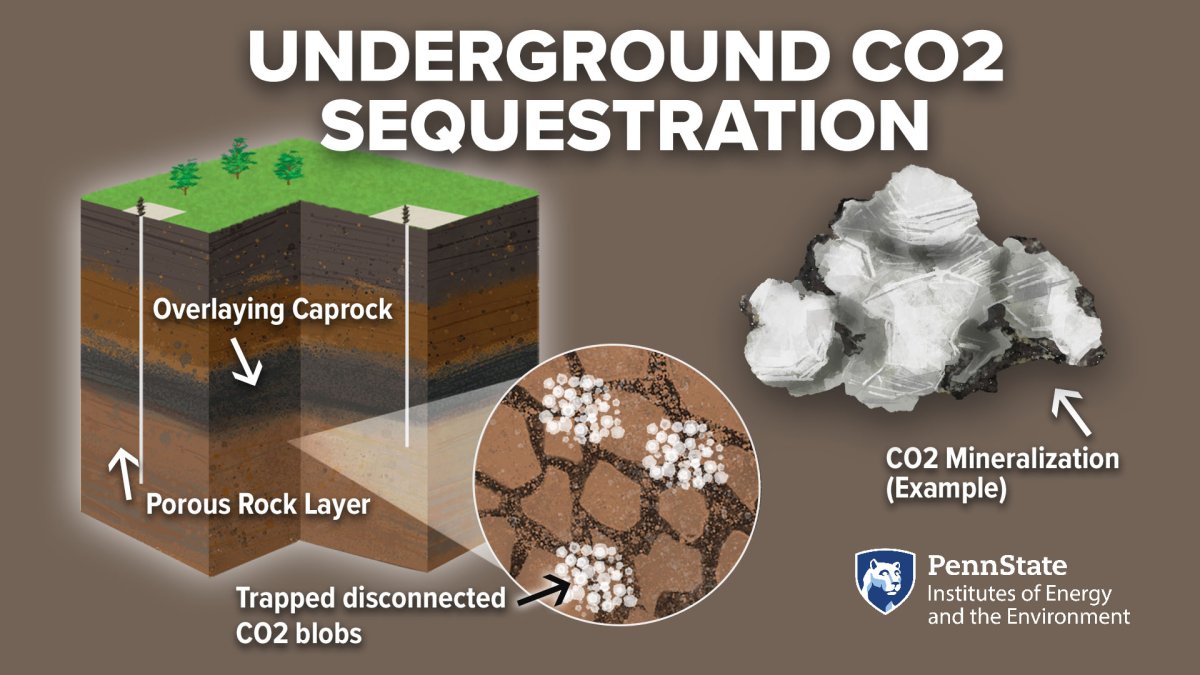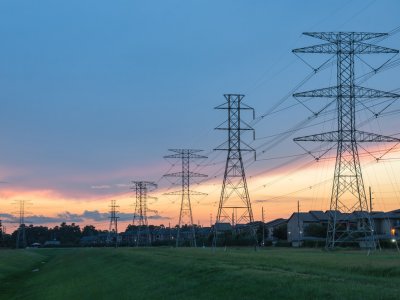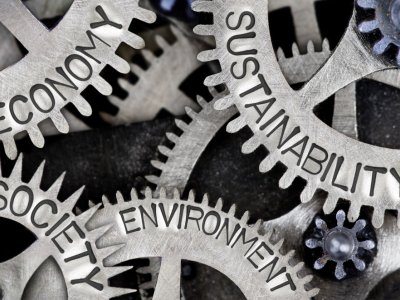The central challenge that we face over the next few decades is how to curtail the emissions of CO2 while not only maintaining, but growing, the quality of life on this planet. This means nothing short of a complete overhaul of where we source our energy from, how we dispose of waste, and the way we build our cities. It is amazing how porous materials, objects with tiny little holes in them, lie at the center of this transition.
Consider the Earth's subsurface, the largest porous medium of all, which supplies most of our drinking water and, for the past century and a half, our energy in the form of petroleum. The cost civilization has paid for having its lights on this long though, mostly in the Western world, is climate change. To counter it, one key technology is to strip carbon from factory smokestacks, or directly from the air, called direct air capture, then inject it deep underground as waste. Here, “deep” means thousands of feet below the water table.
After injection, one of two outcomes are desired: (1) Either the CO2 mixes with the water underground and precipitates out as a mineral (i.e., it turns into rock), or (2) it “liquifies” (i.e., turns supercritical) and gets trapped as disconnected blobs that can no longer move due to buoyancy. Mineralization is safer, because it is permanent, but requires a special type of rock that contains rock-forming minerals (i.e., abundant in divalent cations), and that is site-dependent. Trapping CO2 blobs is also safe if the underground rock has a “trap friendly” microstructure and is geologically sealed from above to curb buoyant leakage. An important challenge in both scenarios is site selection, and the answer lies in understanding how fluids and minerals interact inside a porous rock.

What about energy production? If we use renewables such as wind and solar, then supply will not match demand, and we must store the energy somehow. This is because the sun shines the most during summer when we need the energy the least, and the wind blows independent of what we want. Storage buffers this intermittency and turns an erratic input stream of power into a steady and reliable output. The challenge lies in that the scale is massive. Therefore, whatever storage medium we adopt must be commensurately scalable, and this goes beyond batteries.
Hydrogen fits the bill. But the large quantities of it produced by transforming wind/solar (e.g., via electrolysis) must be stockpiled somewhere. Surface tanks are not the best idea, because they may leak, and hydrogen is corrosive and explosive. So, we are forced to consider the idea of underground storage, where we are immediately faced with the same challenges related to leakage and containment as the CO2 problem. But there are new challenges too, such as how to ensure that the purity of the hydrogen we withdraw during winter is close to the purity of the hydrogen we inject during summer. To address these, we must understand how fluids mix, flow, and interact with the porous rock.

If we move beyond wind/solar and consider nuclear energy as the potential source, porous materials show up again. This is because nuclear energy requires a safe place to dispose of its radioactive waste. And where could that be? You guessed it. Underground, and we are back to facing the same challenges and questions about leakage and safety as the CO2 and hydrogen problems, and with that, the need to understand porous-media physics.
If we move out of the subsurface and consider manufacturing applications critical to the energy transition, we find porous materials yet again. For example, one way to produce hydrogen from renewables is to split water (i.e., H2O into H2 and O2) with a device called an electrolyzer. To convert that hydrogen back into electricity at a later time, one would make water (i.e., H2 and O2 into H2O) by running the electrolyzer in reverse, also called a fuel cell. To build a fuel cell/electrolyzer, several sheetlike materials are sandwiched into a pancake with electrodes attached to either side. Some of those sheets are porous. Specifically, the “gas-diffusion layer” and “micro-porous layer,” housing the catalyst, are micro-/nano-porous and serve a multitude of functions. Not only must they be electronically conductive to let the generated electricity out, but they must also allow water/gases to move in/out of the device with ease. There is a conflict of interest: low electronic resistance requires a high solid (e.g., carbon-fiber) fraction, whereas a low hydraulic resistance requires a low solid fraction. The precise engineering of these devices, then, means finding an optimal microstructure that balances between these two objectives.
Another example is buildings, which must not only be resilient to extreme events, whose frequencies have risen with climate change, but also energy efficient. The corresponding engineering challenge is to manufacture lightweight materials that are also high in strength and thermo-acoustic insulators. What better way to reduce weight than by making the building materials porous? While our intuition may suggest doing so could reduce the materials’ strength, research shows otherwise: strength can be increased by increasing porosity, but the specific microstructure matters and must be carefully designed.
An accessible example is the bones in our bodies, which are porous and have fibrous/sheetlike microstructure. Evidently, evolution’s solution to bipedal creatures that have maximal mobility, minimal energy consumption, and high skeletal robustness has been “porous bones.” Their microstructure is currently providing inspiration for how lightweight and high-strength porous materials could be designed, a field called biomimetics. In addition to buildings, such materials have other uses in making fuel-efficient airplanes and safer, shock-absorbing cars.

The energy and climate challenges of the next few decades are enormous and the associated uncertainties about which technologies might prevail are immeasurable. But the challenges are not insurmountable for two reasons: (1) The proposed solutions are manifold and have built-in redundancy; And (2) their common denominator is underpinned by the same fundamental scientific questions. The latter implies the number of problems to be solved is smaller than we may think, but their difficulty is much higher than we are used to. Porous materials are one such common denominator, but there are many more like it.
Yashar Mehmani is a cofunded faculty member of the Institutes of Energy and the Environment. He is also an assistant professor in the John and Willie Leone Department of Energy & Mineral Engineering. His research interests are broadly related to porous media flow and mechanics, with a special focus on computing and scale translation.





